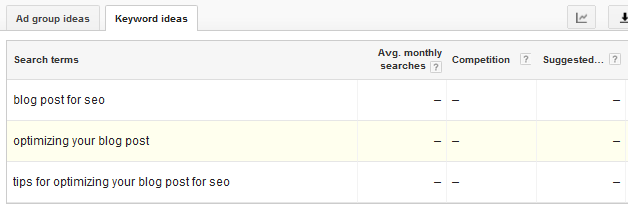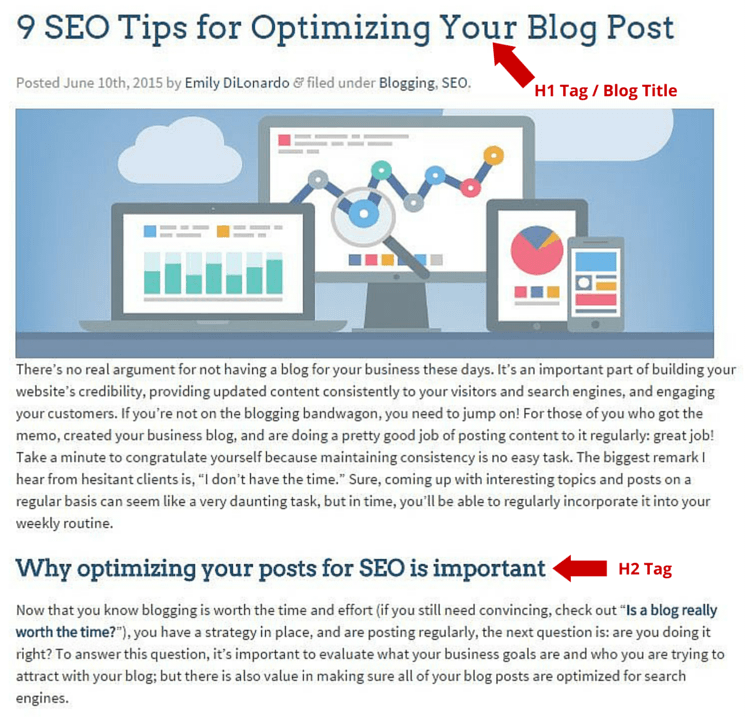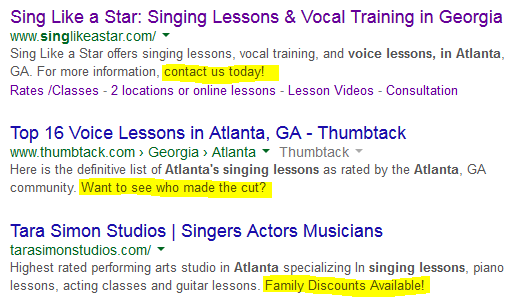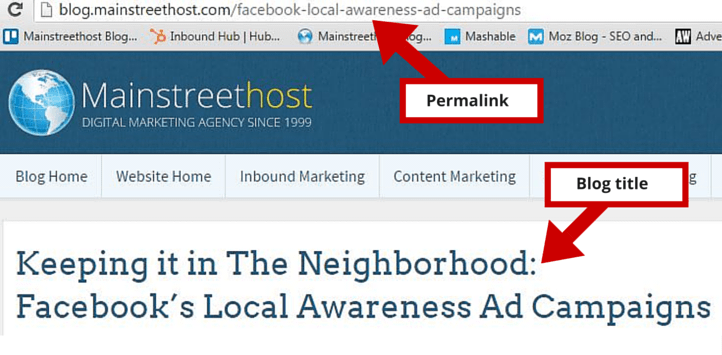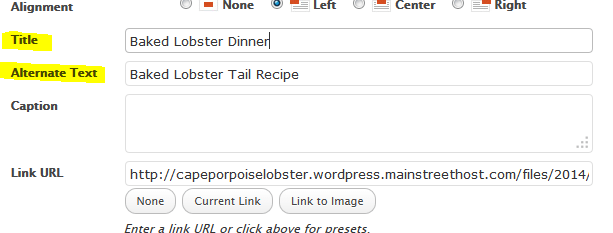There’s no real argument for not having a blog for your business these days. It’s an important part of building your website’s credibility, providing updated content consistently to your visitors and search engines, and engaging your customers. If you’re not on the blogging bandwagon, you need to jump on! For those of you who got the memo, created your business blog, and are doing a pretty good job of posting content to it regularly: great job! Take a minute to congratulate yourself because maintaining consistency is no easy task. The biggest remark I hear from hesitant clients is, “I don’t have the time.” Sure, coming up with interesting topics and posts on a regular basis can seem like a very daunting task, but in time, you’ll be able to regularly incorporate it into your weekly routine.
Why Optimizing Your Posts for Seo Is Important
Now that you know blogging is worth the time and effort (if you still need convincing, check out “Is a blog really worth the time?”), you have a strategy in place, and are posting regularly, the next question is: are you doing it right? To answer this question, it’s important to evaluate what your business goals are and who you are trying to attract with your blog; but there is also value in making sure all of your blog posts are optimized for search engines.
How Does Blogging Help SEO?
- It builds more pages on the website for increased on-page SEO
- It ensures that fresh content is consistently being added to the website (which search engines like Google love)
- It naturally builds links through shares, sourcing, etc., which increases a website’s authority
- It adds relevancy for secondary keyword phrases and possible rankings
- It answers questions searchers could be asking about your services and products
However, simply creating posts is not enough. Those who run successful blogs have a plan of attack on how to promote their posts via social media outlets and optimize each post to generate more visitors through organic search results. You could be missing out on potential traffic and customers if you don’t take the time to review what you’re putting out there. One of the main goals for your blog should be to create valuable content people will want to share naturally. Below are 9 tips for optimizing blog posts for organic success.
Start with Research
If you don’t already know what phrases are the most valuable to rank under for your business, do some research. The SEO goal for any site is to target the phrases that individuals are typing in. Even if you feel that you know what phrases are important, it’s a good practice to conduct research and see if there are changing trends or possible variations of phrases you had not thought of before. Your blog should make it clear that your blog and website content revolve around those phrases. One of the best tools to use for research is Google AdWords Keyword Planner. For this purpose, we can ignore the suggested bids and focus on what the average monthly searches are, as well as the competition for those phrases. This can help determine subject matter for the blog or, minimally, what phrases you should incorporate throughout certain posts. For example, I was initially going to title this post, “9 Tips for Optimizing Your Blog Post for SEO.” After reviewing this phrasing in the keyword planner, I realized it isn’t the most searched (and by most searched, I mean it’s never searched) phrase.
So I switched it around a little bit to something that had at least one piece of a phrase people were more likely to search. In this case, I tried to highlight “SEO tips.”
Identify Important Keywords
What are the phrases you are going to incorporate into each post? In general, focus on one or two long-tail phrases per post. Adding variations of phrases can also help with adding relevancy and increasing rankings. Examples of variations:
- Cat sitting, Cat sitter, Cat sitters, Cat babysitting, Pet sitting
- Lawyers vs. Attorneys
- Dentist vs. Oral Surgery
Examples of Long-Tail Phrases:
- Professional cat sitters in Buffalo
- Personal injury attorney in WNY
Create Valuable Anchor Text Links
Anchor text links are important because they:
- Emphasize certain phrases
- Can help a site rank under certain phrases by stressing the importance of the linked phrase
- Help visitors navigate a site
Examples of Effective Anchor Text:
- We have over 25 years of experience building SEO strategies for small businesses.
- Try Tim Hortons’ new dark roast coffee at all locations.
Less Effective Anchor Text:
- We have over 25 years of experience building SEO strategies for small businesses.
- Try Tim Horton’s new dark roast coffee at all locations.
There should be at least one anchor text link in a blog post linking back to a relevant page or another post on your website. It’s important that you are not using your blog only to self-promote or sell your company, but it’s ok to highlight relevant pages here and there. In general, if you link to one other piece of content on your blog or website (when it makes sense to do so), you can increase the SEO value of the site without being spammy or discouraging readers. Do you see the valuable anchor text in the intro of this article?
Incorporate External Links and Sources
Adding links to other websites or articles also adds credibility to your posts. In general, you would not want a blog that ONLY links back to your own website, products, or posts. If we add links back to our site, we should also include a link/reference to another post or website as well. Adding mentions or sourcing other articles within your post can also increase the chances that your post will be linked back to, adding authority to the site. In a recent article by Backlinko, which lists Google’s 200 ranking factors, this exact point is highlighted in factors #31 and #53.
Include Blog titles / Heading tags (H tags) / Meta titles
All three of these components are essential ranking factors of a web page or blog post. In many cases with blogs, these can end up being the same, which is ok. The most important thing is to have all three present on each post you publish. Blog titles should be engaging to a visitor to encourage them to click through to the post. Meta titles and H1 tags are important because they signal to the search engines what a post is all about. Make sure to include keywords and phrases in all three. Use H2 tags when possible to further break down keywords for the search engines and give secondary importance to additional keywords.
Write Engaging Meta Descriptions
This is a short description of the post and should include the main keyword phrases you are targeting. In order to encourage more clickthroughs on the search results, include a call-to-action.
Examples of Short Calls-to-action for Descriptions:
- Click here
- Learn more
- Find out how
- Learn our tips and tricks
- Get more details here
- Sign up now
Descriptions should be no less than 100 characters and no longer than 156 characters to ensure they display correctly in search results. Both titles and descriptions should be written as if someone was reading it naturally, but include important key phrases.
Build Permalinks
Make sure permalinks on the site are well written and include keywords if possible. Oftentimes, this will be consistent with the blog title, H1, and meta title choices.
Examples of Poor URL Extensions:
- /socialmediamarketing.php (crammed together)
- /services_search_engine_optimization.html (underscores are not the best option)
- /case-studies-for-internet-marketing-seo-ppc-smm-get-your-marketing-up-to-snuff-for-cheap/ (too long)
- /page1.html (nonsense)
Optimize Images
Pictures should be included in all posts to help break up the content, make it more visibly appealing, and improve user experience. H2 and H3 tags also help do this. (I mean, would you have made it this far through this post if I hadn’t broken it up so nicely for you?) There should be an image title and image alt tag for each picture, at a minimum.
Image titles are for visitors (example below), meaning they may see the phrases if they hover over the image.
Use Categories and Tags Correctly
Categories and tags help organize your blog posts for both search engines and visitors. Do not overuse tags or categories. Categories should be used as a more broad identification of the topic of the blog. Tags should be used to specify more information about the post and target additional keyword phrases. Overusing tags or using too many closely-related tags could be harmful for SEO. In general, one blog should have between 15-25 tags used throughout its posts. Example of similar tags that can be condensed: ‘Email,’ ‘Email Marketing,’ ‘Emailing’
Make Your Blog Posts Count
Overall, business blogs should be used to create valuable content people will want to read, share, and link to naturally. User experience should be the main priority for all topics created; does your audience want to read about this? Keeping user experience and value in mind, you can still incorporate all of the above tips and start increasing your blog posts’ organic reach.



